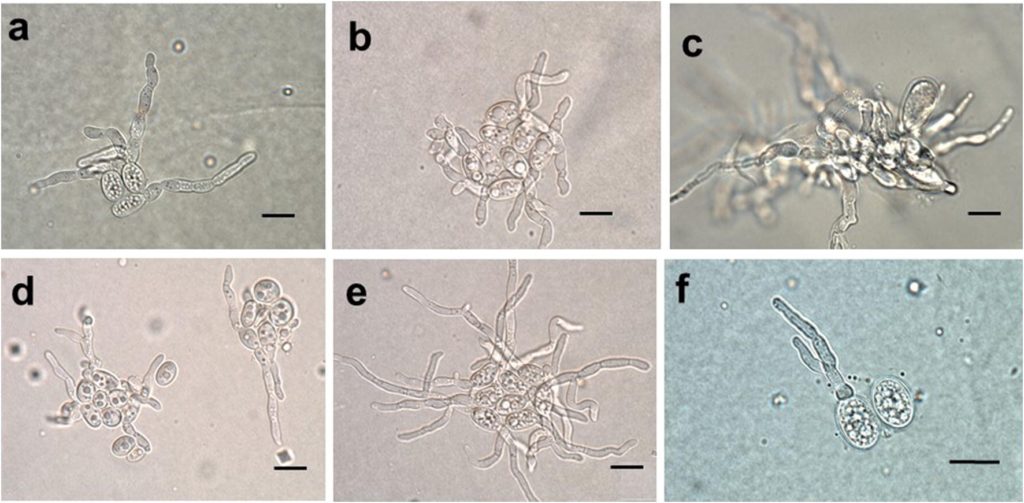Axenic Culture and Biosynthesis of Secondary Compounds in Lichen Symbiotic Fungi, the Parmeliaceae
Rey Juan Carlos University, Complutense University of Madrid, University Rennes
Abstract
Lichens produce unique secondary metabolites with a rich potential as bioactive compounds. In many cases, the use of these molecules is limited by the low concentration of these compounds in thalli, low growth rate in culture, and changes in chemical patterns between thalli and aposymbiotic culture. In addition, the massive collection of some species of industrial interest can cause damage to lichen diversity and the associated environment. Six lichenized fungi (Arctoparmelia centrifuga, Parmelia saxatilis, Parmelina tiliacea, Platismatia glauca, Xanthoparmelia tinctina, and Usnea ghattensis) with biotechnological interest and belonging to Parmeliaceae have been cultured in order to test culture conditions and obtain enough biomass for further studies. In addition, we analyzed the compounds synthetized in axenic conditions and they were compared with chemosyndromes identified in complete thalli. Arctoparmelia centrifuga, P. saxatilis, P. tiliacea and X. tinctina were successfully cultivated while for P. glauca and U. ghattensis we only obtained sporulation and germination of the spores. The chemical pattern of the compounds secreted into the culture media varied significantly from the chemosyndrome of the whole thallus. Phenolic compounds of pharmacological and industrial interest (usnic acid, aspicilin, α-alectoronic acid, physodic acid, lobaric acid and nordivaricatic acid) and a wide variety of potentially bioactive compounds were obtained during the culture process.
Analysis was performed by LC/MS using the Advion Interchim Scientific® expression® Compact Mass Spectrometer (CMS).

